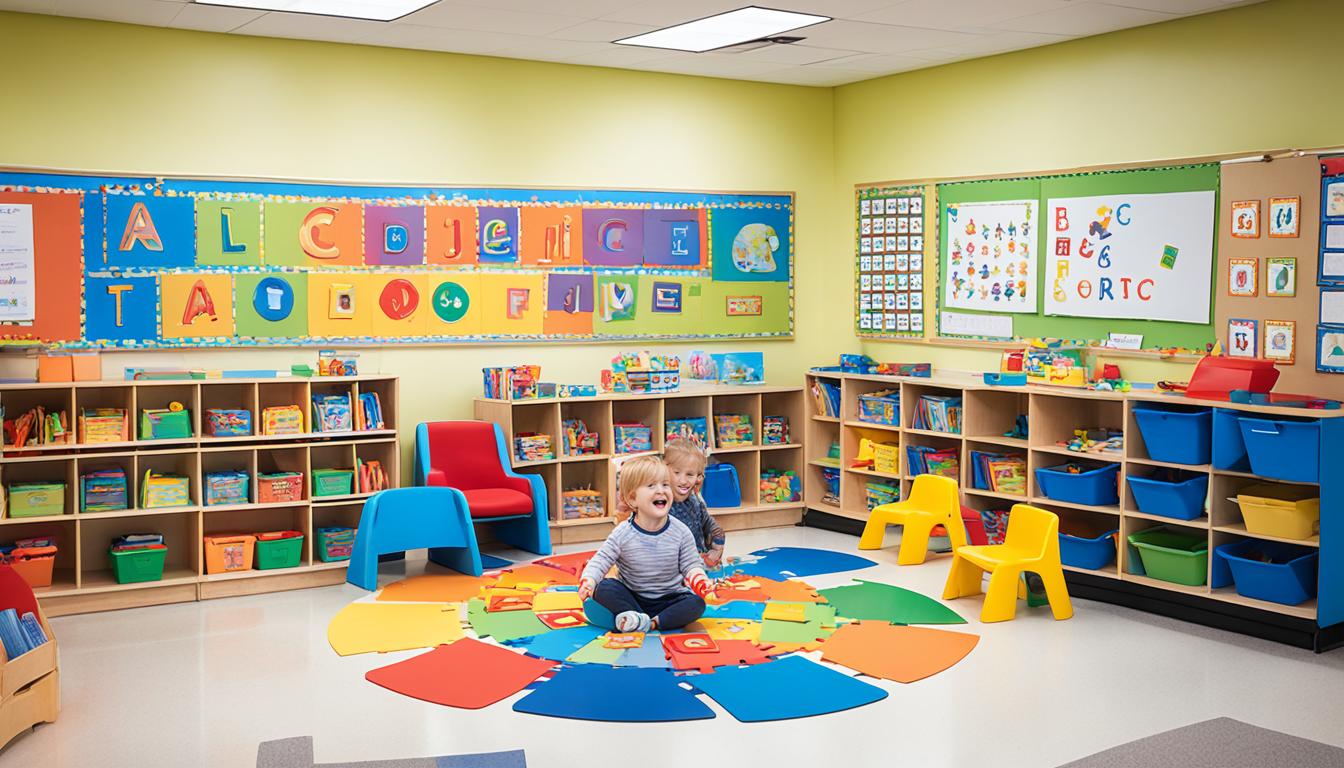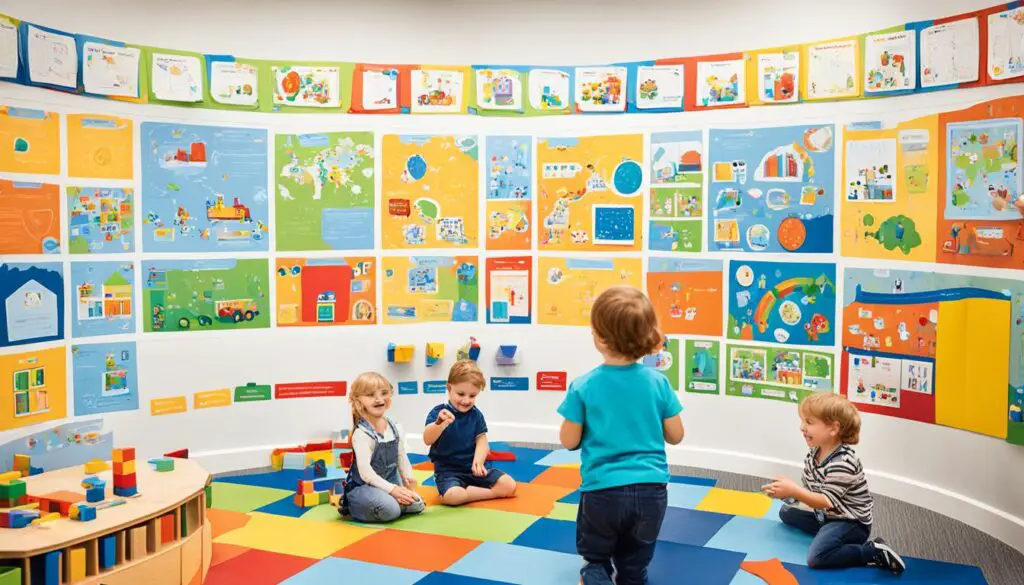
Designing an Early Education Curriculum: Best Practices and Innovations
Greetings, educators! As an experienced professional in the field of early education, I am excited to share with you some valuable insights on designing an effective early education curriculum. This article will delve into the best practices and innovative approaches that can enhance the learning experience for young learners. Whether you are a teacher, childcare provider, or parent, understanding these key strategies can make a significant impact on the development and growth of our future leaders.
Before we dive into the details, let’s take a moment to recognize the importance of a well-designed early education curriculum. It serves as the foundation for a child’s educational journey, laying the groundwork for their cognitive, social, and emotional development. By incorporating best practices and embracing innovative techniques, we can create an engaging and holistic learning environment that nurtures the unique abilities and interests of each child.
Key Takeaways:
- Promote active engagement through hands-on and experiential learning activities.
- Align materials and resources with the developmental needs of young learners.
- Cultivate a supportive and inclusive learning environment that celebrates diversity.
- Integrate technology as a tool for learning while maintaining a balanced screen time.
- Foster collaboration between families and educators to create a seamless learning experience.
Stay with us as we delve deeper into the best practices for designing an engaging early education curriculum and explore the exciting innovations that are reshaping the field. Together, we can pave the way for a brighter future for our children.
Best Practices for Designing an Engaging Early Education Curriculum
When it comes to designing an engaging early education curriculum, there are several best practices that educators should consider. By incorporating these strategies, teachers can create a learning environment that fosters active engagement, promotes developmentally appropriate activities, and caters to the individual needs and interests of their young learners.
Incorporate Hands-On and Experiential Learning Activities
One of the most effective ways to engage young learners is through hands-on and experiential learning activities. By providing opportunities for children to actively engage with materials and explore real-world concepts, educators can enhance their understanding and retention of important skills and knowledge.
Use Age-Appropriate Materials and Resources
Using age-appropriate materials and resources is crucial in designing an effective early education curriculum. By aligning the curriculum with the developmental needs of young learners, educators can ensure that the activities and materials are both accessible and challenging.
Foster a Supportive and Inclusive Learning Environment
Creating a supportive and inclusive learning environment is essential for fostering engagement and promoting positive outcomes. By respecting and celebrating the diversity of the classroom, educators can create a sense of belonging and ensure that all students feel valued and empowered.
Integrate Technology as a Tool for Learning
Integrating technology can greatly enhance the learning experience for young children. However, it is important to strike a balance and ensure that screen time is used purposefully and in moderation. Technology should be viewed as a tool for learning and exploration, rather than a passive form of entertainment.
Collaborate with Families and Caregivers
Collaborating with families and caregivers is essential in creating a seamless learning experience between home and school. By involving parents in their child’s education and maintaining open lines of communication, educators can reinforce learning goals and support the child’s overall development.
Implement a Well-Rounded Curriculum
An engaging early education curriculum should encompass a wide range of subjects, including language and literacy development, mathematics, science, social studies, and the arts. By offering a well-rounded curriculum, educators can provide children with a holistic learning experience that addresses various aspects of their development.
Provide Opportunities for Play-Based Learning
Play-based learning is a valuable approach that supports the social, emotional, and cognitive development of young children. By incorporating play into the curriculum, educators can promote social skills, problem-solving abilities, and creativity in a fun and interactive manner.
Adapt and Tailor the Curriculum
Every child is unique, with individual needs and interests. To effectively engage children in the learning process, educators should adapt and tailor the curriculum to meet the specific needs of each child. By recognizing and accommodating their diverse abilities and preferences, educators can create a truly engaging and inclusive learning environment.

Let’s now take a closer look at the best practices for designing an engaging early education curriculum:
- Incorporate hands-on and experiential learning activities
- Use age-appropriate materials and resources
- Foster a supportive and inclusive learning environment
- Integrate technology as a tool for learning
- Collaborate with families and caregivers
- Implement a well-rounded curriculum
- Provide opportunities for play-based learning
- Adapt and tailor the curriculum to meet individual needs
By following these best practices, educators can create an early education curriculum that not only engages young learners but also sets them up for success in their educational journey.
Innovations in Early Education Curriculum Design
When it comes to designing an early education curriculum, embracing innovations is key to fostering a dynamic and impactful learning environment for young children. By incorporating innovative practices, educators can create engaging experiences that not only promote academic development but also nurture essential life skills.
One innovative approach is project-based learning, where students are actively involved in real-world problem-solving and inquiry-based activities. This method encourages critical thinking, collaboration, and creativity, preparing children for a future that demands adaptability and innovative thinking.
Integrating STEAM (Science, Technology, Engineering, Arts, and Mathematics) concepts and activities is another way to enrich early education curriculum design. By bridging subjects and encouraging interdisciplinary learning, students can develop a holistic understanding of the world and explore creativity through scientific inquiry and artistic expression.
In addition to academic growth, it is crucial to prioritize social-emotional learning. By incorporating strategies that focus on self-awareness, empathy, and relationship-building skills, educators can support the holistic development of children, nurturing their emotional well-being and equipping them with essential social skills.
As technology continues to evolve, digital tools and resources offer exciting possibilities in early education. By utilizing these tools, educators can enhance learning experiences, provide personalized learning opportunities, and cultivate digital literacy skills that are essential for success in the digital age.
Furthermore, promoting a positive learning environment that fosters a growth mindset and resilience is essential. By nurturing a sense of optimism, perseverance, and the willingness to embrace challenges, educators can empower children to overcome obstacles and develop a lifelong love for learning.
Nature-based learning experiences play a vital role in early education curriculum design, promoting outdoor education and environmental awareness. By immersing children in the natural world, educators can foster a deep connection with nature, instilling a sense of stewardship and environmental responsibility.
Lastly, creating a culturally responsive curriculum that acknowledges and affirms the diverse backgrounds and experiences of all students is crucial. By incorporating culturally relevant content and practices, educators can create an inclusive learning environment that celebrates diversity, fosters empathy, and promotes a sense of belonging.
In the ever-evolving field of early childhood education, staying informed about current research and best practices is essential. By continuously seeking out the latest advancements and insights, educators can refine and improve curriculum design, ensuring that it remains effective, engaging, and responsive to the needs of young learners.
FAQ
How can I design an engaging early education curriculum?
To design an engaging early education curriculum, it is important to incorporate hands-on and experiential learning activities to promote active engagement. Additionally, using age-appropriate materials and resources that align with the developmental needs of young learners will enhance their learning experience. Foster a supportive and inclusive learning environment that respects and celebrates diversity, and integrate technology as a tool for learning and exploration, while ensuring balanced screen time.
How can I collaborate with families and caregivers to create a seamless learning experience between home and school?
Collaborating with families and caregivers is essential for creating a seamless learning experience for children. Communication and partnership with families are key. Regularly sharing information about children’s progress, involving families in decision-making processes, and providing resources and support for learning at home will help create a strong connection between home and school.
What are some best practices for incorporating STEAM concepts in early education?
To incorporate STEAM (Science, Technology, Engineering, Arts, and Mathematics) concepts in early education, educators can plan interdisciplinary activities that integrate these subjects. This can include hands-on experiments, building structures, creating art inspired by nature, and exploring mathematical concepts through play. By providing opportunities for children to explore and engage with these concepts in a meaningful way, educators can promote a holistic learning experience.
How can I support the social-emotional development of young learners?
Supporting the social-emotional development of young learners is crucial. Educators can incorporate social-emotional learning strategies into their curriculum, such as promoting self-awareness, empathy, and relationship-building skills. Creating a positive and inclusive classroom environment, providing opportunities for cooperative play and problem-solving, and integrating activities that encourage self-expression and emotional regulation can all contribute to the social-emotional development of young children.
How can I stay informed about the latest research and best practices in early childhood education?
Staying informed about the latest research and best practices in early childhood education is vital for designing an effective curriculum. Educators can participate in professional development opportunities, attend conferences, join online communities, and engage in ongoing learning and reflective practice. Additionally, subscribing to reputable educational journals and following trusted educational websites and organizations can help educators stay up-to-date with current research and best practices.